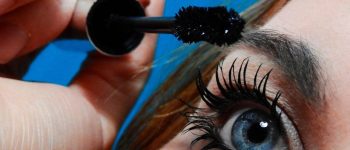Is there anything more satisfying for a lash artist than seeing their clients light up with joy at their perfectly crafted lash extensions? Whether you’re a seasoned pro or just starting out, the feeling of accomplishment when your client can’t stop admiring their fluttery lashes is unparalleled.

Creating stunning volume lash fans is an art in itself. The sheer luxury of it never fails to take our breath away. In this article, we will share some tips on how to achieve amazing volume lash fan looks.
What defines a perfect volume lash fan?
A perfect volume lash fan is characterized by equal spacing between individual lashes, a 1/3 ratio between the body and the base of the fan, a 2-3mm area for glue application, and symmetrical placement.

As humans, we are naturally drawn to perfection. Anything that deviates from this standard is often considered unattractive. That’s why achieving the right proportions is crucial for a perfect volume lash fan. The even spacing and balanced proportions contribute to a neater and more pleasing overall appearance, even after a few weeks.
Using imperfect fans may be tempting, but the difference in the end result is striking. The set with perfectly crafted fans looks much neater and well-maintained compared to the set with unevenly spaced fans.

Customizing the fan for each client
Just as we tailor other aspects of the lash application to the client’s needs, creating volume lash fans should be personalized as well. There are different types of sizes and styles to choose from, and it’s essential to decide on the best one together with your client.
Wide fan vs. narrow fan
If your client desires a light and fluffy look, a wide fan is the way to go. The lashes will appear shorter and less impactful, but they will create a softer and more natural look. Be sure to inform your client about this beforehand. When working with wide fans, ensure that the stems are not too short, as it can affect retention.
The overall width of the fan should not exceed 6mm (1/4 inch) to avoid a messy appearance and simplify the application process.

On the other hand, narrow fans are ideal for a uniform and denser look. They create a stunningly dramatic top line and can be used to achieve a femme fatale vibe. Keep the stems long enough to prevent the lashes from looking messy and uneven.
Thin base vs. flat base
One of the advantages of handmade volume lash fans is the flexibility in style. As an artist, you can choose between a thin base and a flat base, depending on the desired look.

Lashes with a thin base can be attached anywhere on the natural lash, including the top, bottom, and sides. This allows for a tidier look and better retention. The thin base volume fans can also be wrapped around the natural lash for added support.
A flat base, on the other hand, can only be placed on top or under the natural lash. While it may not provide as much wrapping as the thin base fan, it creates a darker impression along the lash line, making it ideal for clients with sparse natural lashes.
If you find yourself consistently creating flat base fans instead of thin base fans, it could be due to your glue drying too quickly. Try using a glue that gives you a few extra seconds to achieve the desired effect.
Different volume techniques to explore
There are various volume lash techniques to experiment with, each with its own unique approach and advantages.
Off tape technique
Perfect for beginners, the off tape technique allows you to move individual volume lashes either on the same tape or a different one. This method involves picking up a volume lash, separating it from the rest, and fanning out the lashes. You can then gently lift the lash by grabbing it in the middle and pulling it up towards yourself.
Lean and pick technique
In the lean and pick technique, you pick up the fan close to the base without crossing over and place it on the strip. Lean the fan over and carefully open the lashes, hence the name. This technique allows for easy manipulation of each individual lash, resulting in even fan opening. Practice this method frequently to become proficient in creating perfect little fans.
Pinching technique
To master the pinching technique, hold a lash firmly between your thumb and forefinger, using tweezers for a better grip if necessary. Be cautious not to roll the base. Continue pinching the lashes with your fingers while slowly using tweezers to open the fan. Once you achieve the desired shape, dip the fan in glue and apply it.
Practice makes perfect
If you’re not yet confident enough to attempt volume fan lashing on a client, you can practice at home using different fan sizes and techniques.
The sponge method
Using a makeup sponge is an easy and effective way to practice. The sponge allows you to assess how well you’ve attached the lashes and helps improve precision. You can also practice your angle placement. While a sponge does not perfectly mimic the eye, it’s a valuable tool for honing your skills before working on real clients.

The mannequin method
If you have a practice mannequin head at home, it’s even better for trying out your lashing techniques. Set up the mannequin head on your lash bed, maintaining good posture. Create volume fans and apply them to the mannequin head as you would if it were a real client. This allows you to gain confidence and refine your technique without any pressure.
Must-have products for Russian volume lash enthusiasts
Russian volume lashes are simply fabulous, and there’s no match for them. If you’re a fan of this lash style, we recommend using Mink lash extensions in 0.03, 0.05, and 0.07 sizes.
Depending on your lashing speed, consider using fast-drying thin lash glue, such as Mach glue, for quick application. Alternatively, viscous lash glue, like Glam glue, with a slightly longer drying time (4-5 seconds), is an excellent option. Remember to invest in good lash extension tweezers for precise and efficient application.
Now armed with this knowledge, dive into practicing your volume lash fan techniques. With dedication and practice, you’ll soon be creating stunning lash looks for your clients.
Happy lashing!
Read more:




